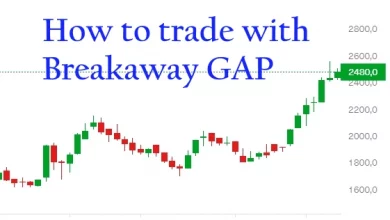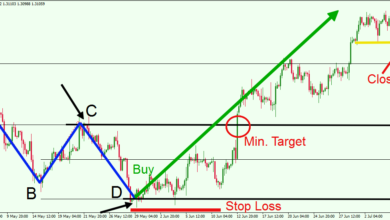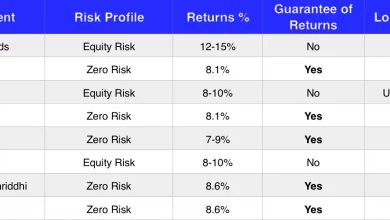FREE TIPS, TRICKS, AND INTRADAY TRADING TECHNIQUES FOR BEGINNERS 2021

Intraday trading often referred to as day trading, is the best option for stock market beginners. Even though this kind of trading is riskier than investing in the normal stock market due to intraday traders’ higher volatility than long-term traders, it is still a viable option.
To minimize losses, it is critical to understand the fundamentals of such trading, particularly for novices. This article will provide you with the necessary information to maximize your intraday trading profits.
WHAT IS INTRADAY TRADING?
Intraday trading is a type of trading that takes place daily. This is when you buy and sell stocks on the same day to benefit. You do not intend to take delivery of shares with this market order.
In other words, if you purchase or sell stocks intraday, you take advantage of market changes and close the trade well before the end of a particular trading day, ensuring there were no unresolved shares for another trading day.
Contents
STOCKS AND INTRADAY TRADING
It’s crucial to know how to pick stocks for intraday trading if you want to be a successful day trader. People frequently fail to benefit because they do not choose the right stocks to buy and sell
Day trading, if not handled correctly, can have disastrous consequences for consumers’ financial well-being. Traders may be enticed by the prospect of making large profits in a short period. Intraday trading, on the other hand, might be dangerous if you have a lack of understanding and information.
Intraday traders frequently choose equities based on the number of trades. When there is a big volume of trade, it is generally better to pick stocks. This is because when trade volume is strong, prices tend to rise as well. How often a firm’s stock is traded at a given moment is known as volume.
The resistance level of a stock is also a useful signal. It is always a good opportunity to buy a stock when it breaks through its resistance levels and advances upwards.
For intraday traders, keeping up with the news is crucial. In most circumstances, a company’s stock price rises in response to positive news. It’s also useful to keep track of the week’s top gainers and losers. They can inform you how various stocks have performed over a specific timeframe.
INTRADAY TRADING TECHNIQUES.
Intraday traders are always exposed to the inherent hazards of the stock market. Market volatility and daily turnover fluctuations are two elements that influence the equities chosen for daily trading. As a result, traders should arm themselves with the proper knowledge of intraday trading tactics.
Here are some proven intraday trading techniques to help you make money:
Intraday Time Analysis
Daily charts, which reflect price fluctuations over one day, are the most widely used in intraday trading. These charts are a common intraday trading approach that shows price movement from the equivalent point to the closing bell of the daily trading window. Intraday trading charts can be utilized in a variety of ways.
Opening Range Breakout (ORB)
Professional and novice traders alike employ the Opening Range Breakout intraday trading method. To maximize the potential of this technique, it is recommended that it be combined with the best use of indicators, an accurate evaluation of market sentiment, and strict restrictions. This strategy comes in a variety of flavors; some traders prefer to trade on significant breakouts from the opening range, while others want to trade on the opening range breakout. The trades can take anywhere from 20 minutes to four hours to complete.
Resistance and Support
From the first 20 minutes of a trading session, every stock price moves within a range regarded as the starting range. Resistance and support levels are supposed to be the highest and lowest prices within this time frame. When the price of a stock rises above the opening range high, it’s a good idea to purchase, and when it drops far below the opening range lower, it’s a good idea to sell.
Demand-Supply Imbalances
For beginners, one important intraday trading tip is to search for stocks with significant demand-supply disparities and use them as entry points. When there is no market for high supplies, prices fall, and vice versa. Trader s must examine and study historical price movements to learn to recognize such points on the price chart
Choose a risk-to-reward ratio of 2:1
Traders, particularly beginners, must comprehend the proper risk-to-reward ratio. Finding stocks with a possible risk-reward ratio of approximately 2:1 will firstly be advantageous in making money in the stock market. Even if they fail on most of their transactions, this process will help them to lose modestly while offering them the possibility to profit big.
Relative Strength Index (RSI) and Average Directional Index (ADX)
Traders can make money by combining these two intraday trading tactics to discover buy and sell chances. The RSI is a quantitative momentum indicator that compares recent assets and liabilities to identify which stocks are overbought and which are oversold. The ADX is a useful tool for determining when prices are trending strongly.
In most cases, crossing the upper limit of the RSI indicates a sell order and vice versa. When the RSI and ADX are combined, intraday traders purchase when the RSI hits the upper limit and sell when the RSI crosses the lower limit. The ADX is a trend identifier that helps users decide whether to purchase or sell.
WHAT FACTORS SHOULD YOU CONSIDER WHEN TRADING INTRADAY?
As a beginner, you must consider the following factors when trading intraday:
- The stock you’re trading must have a lot of liquidity.
- The stock can’t be too volatile.
- The stock must be in line with current market conditions.
- The price of the stock must be rising.
TIPS FOR INTRADAY TRADING
Intraday trading entails closing open trades well before the end of each trading day. That is why it is best to invest in 2 or 3 large-cap, volatile stocks. Due to low trading volumes, investing in mid-size or small-cap stocks may require the investor to keep the shares.
Establish your target and Entry prices
You must first establish your entry-level and goal price before placing a buy order. After purchasing the shares, it is usual for a person’s psychology to shift. As a consequence, you may be able to sell even if the price rises only slightly. As a result of the price increase, you may miss out on the potential to profit from bigger gains.
Using Stop Loss to Reduce the Impact
A stop loss is a prompt that causes the shares to be sold automatically if the price falls below a certain threshold. This is advantageous because it reduces the risk of investors losing money due to a drop in stock prices. Short-selling investors can use a stop loss to limit their losses if the price rises faster than they anticipated. This intraday trading strategy ensures that your decision is not influenced by emotions.
Don’t go against the trend of the market
Even the most skilled professionals with the most sophisticated technologies are unable to foresee market changes. There are instances when all technical indicators point to a bull market, but the market may still fall. These variables are simply suggestive and do not assure anything. If the market trends against you, it’s critical to get out of your position before you lose a lot of money.
Stock market returns can be substantial, but sticking to these intraday trading tips and tactics should yield lower profits. Intraday trading offers a higher level of leverage, allowing for better returns in a single day. To be a successful day trader, you must be content.
The entry and exit prices should be freeze
The buyer’s misconception affects many stock investors and traders. This occurs when a buyer has an abrupt change of heart after buying a product. The buyer immediately realizes that the choice was not as great as he or she had hoped. As a consequence, once they have purchased a stock, they may make a mistake. To avoid such blunders, it is advisable to always determine the entry and exit prices before taking them aside. This assures that you have an unbiased viewpoint.
Book profit when the target is reached
The secret to successful intraday trading lies in the high leverage and margins that traders enjoy. Leverage and margins help amplify profits (as well as losses). But the trick lies in not getting greedy once that target is reached. Avoid falling into the trap, where you hope that the price will keep rising (or falling, if you short-sell). But, if there is good reason to believe that the price is likely to move in the right direction, then adjust the stop-loss accordingly. Looking around for intraday calls can be a good option before you decide to adjust the stop-loss.
Close all of your open positions at all times
Another essential piece of advice for novices in intraday trading is to cancel any open positions. If the stock price goal they established at the outset of the day isn’t fulfilled, many intraday traders prefer to take delivery of the shares. This may not be the best course of action. After all, the stocks were purchased for intraday trading based on market patterns and technical stock research. They might not be suitable as a long-term investment. Examine the intraday calls and the stock’s basic strength before converting to delivery.
Research your objective thoroughly
Investors should make a wish list of eight to ten stocks and thoroughly examine them. After you’ve found a group of stocks through professional intraday calls, be sure to properly examine them. Find out if there are any upcoming corporate events. Purchases, acquisitions, incentive problems, share options, and dividend payments are just a few examples. These may prove to be just as crucial as keeping up with technical levels.
Booking once the target price has been reached
When the target price is attained, another key intraday trading tip for beginners is to book. Intraday traders typically use one of two approaches: they either fail to terminate an open position when the objective is not met, or they refuse to record gains after the target is attained. Both techniques, however, are laden with danger. It’s critical to close any open positions before the conclusion of the trading day.
However, if a trader believes that a stock’s price has room to rise even higher, it’s critical to alter the stop-loss option and lower the risk element to some amount.
Investors should be avoided at all costs
Intraday trading, like investing, necessitates the purchase of shares. However, the elements that influence both of these methods are different. The first group accepts basics, while the second group evaluates technical details. Day traders frequently take delivery of shares if their goal price is not attained. He or she then waits for the price to rise again to recoup his or her investment. This is not a good idea since the stock may not be worth investing in because it was only acquired for a short time.
BASIC RULES FOR INTRADAY TRADING
Because of the extreme volatility of the stock markets, most traders, especially beginners, lose money in intraday trading. Fear or greed are the most common causes of losses because, while investing is not dangerous, lack of information is.
According to market experts, there are a few basic intraday recommendations that should be followed. To begin, inexperienced traders are often advised to avoid buying and selling equities as the day’s sales begin. This is the case since company stocks are generally volatile in the first hour of the day.
The following are some fundamental intraday trading rules:
Market Predictions
Experts frequently advise people to avoid trading during the first hour after the markets open. Taking positions between 1 p.m. and 2 p.m. might enhance your chances of making money.
Plan your investment strategy and adhere to it
Before starting a trade, consumers should have a clear idea of how they want to trade intraday. Before starting a transaction, it’s critical to figure out the entry and exit prices. Using the stop loss trigger to limit the possible loss on your position is one of the most essential intraday trading strategies. Furthermore, customers are encouraged to terminate their positions once the stock reaches the target price, rather than being greedy and expecting bigger returns.
Exiting a Position in Unfavorable Conditions
It is recommended to record gains and quit an open position when a trade provides profits and cost reversal (price predicted to exhibit reverse trends). Furthermore, if the market circumstances aren’t favorable to the position, it’s best to quit right away rather than waiting for the stop-loss trigger to activate. Traders will be able to cut their losses in half as a result of this.
Invest Minimal Amounts That Won’t Hurt
It’s not unusual for day traders to get carried away once they start making money. Markets, on the other hand, are unpredictable, and even seasoned specialists find it difficult to forecast trends. Beginners might quickly lose all of their assets in such instances. As a result, a good intraday tip is to invest lesser amounts that you can afford to lose. Individuals will not experience financial troubles as a result of this if the markets do not favor them.
Research and Select Liquid Stocks
Understanding the fundamentals of the stock market, as well as fundamental and technical analysis, is recommended before beginning intraday trading. There is a wealth of information on the Internet, and getting the time to read it will be beneficial. Furthermore, the stock markets trade hundreds of stocks, yet traders only need to trade two or three liquid equities. Liquid stocks trade in significant quantities daily. This enables traders to close open positions well before the trading session ends.
Always Close All Open Holdings
If your goals aren’t met, certain traders may be tempted to take delivery of your positions. This is one of the most common mistakes, and traders should always close all open positions, even if they have to record a loss.
Spend Quality time
Professionals with full-time jobs should avoid day trading. Traders should be able to keep track of market changes all through the trading day to make the appropriate decisions.
FREQUENTLY ASKED QUESTIONS
Is there an obvious pattern in the chart?
To discover support and resistance levels as an intraday trader, you must rely primarily on technical charts. You must also ensure that the stock shows distinct patterns.
Is the stock price affected by the news?
To trade, an intraday trader depends on two factors: chart patterns and news responsiveness. In such situations, you must constantly look for companies that are news-responsive and volatile. While trading intraday, you might use the Buy on Rumor, Exit on News strategy.
Is the stock well-known?
When selecting a stock, you should look at the stock’s viable means, which can be found on the NSC and BSE (stock market) websites. Because the free float is smaller, a stock with a low level of ownership is typically less volatile.
As an intraday trader, you should always favor equities that are liquid and not commonly held, as this will significantly minimize your risk.
FINAL THOUGHTS
When it comes to intraday trading, picking the appropriate stocks is critical if you want to be a successful trader. Also, before making a trade, you must do your homework thoroughly.
These intraday trading tips will surely aid you in your trading endeavors. However, when trading intraday, remember to stay objective and data-driven and avoid making decisions based on emotion.




